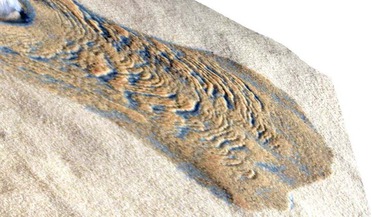 03 May 2016
Martian Seasonal Streaks May be Caused by Boiling Water
03 May 2016
Martian Seasonal Streaks May be Caused by Boiling Water
... atmosphere, water cannot survive long in liquid form, as it either boils or freezes. In September 2015, a report was published in Nature Geoscience that concluded that the lines on Martian slopes may be streaks of super-salty brine. The report said...
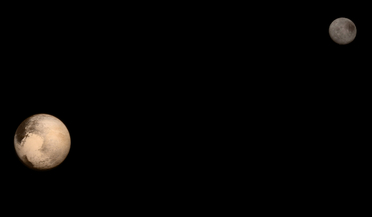 22 June 2020
Icy Pluto may have started off hot with an early ocean
22 June 2020
Icy Pluto may have started off hot with an early ocean
... extensive reactions with the warm silicates beneath,” the authors write in their research paper published in Nature Geoscience today. The potential habitability of distant icy worlds increases when subsurface oceans interact with compounds on a sea...
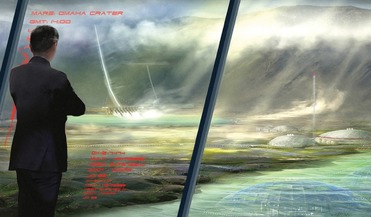 April 2018
Developing Mars
April 2018
Developing Mars
...R., ... & Toupin, S. (2016). Accretion of Phobos and Deimos in an extended debris disc stirred by transient moons. Nature Geoscience, 9(8), 581-583, AIAA International Conference on Environmental Systems; Barcelona, Spain. 24 Fanale, F. P., & Salvail...
 February 2016
Is Jupiter Really Our Protective Shield?
February 2016
Is Jupiter Really Our Protective Shield?
..., Z-Q, Michael J. Benton (2012) The timing and pattern of biotic recovery following the end-Permian mass extinction. Nature Geoscience DOI: 10.1038/ngeo1475. 12 Sahney, S. and Benton M.J (2008). Recovery from the most profound mass extinction of all...
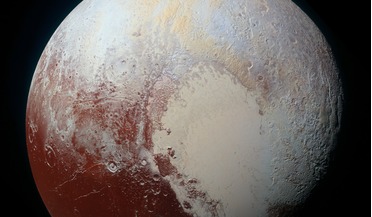 20 May 2019
A thin layer of ice-trapped gas stops Pluto's oceans from freezing
20 May 2019
A thin layer of ice-trapped gas stops Pluto's oceans from freezing
...do the trick say a team of US and Japanese researchers whose lead author on the research paper recently submitted to Nature Geoscience, is Shunichi Kamata based at Hokkaido University, Sapporo, Japan. The trapped molecules official name are clathrate...
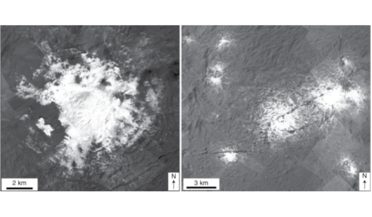 10 August 2020
Salty dwarf planet Ceres could be hiding an ocean
10 August 2020
Salty dwarf planet Ceres could be hiding an ocean
...primarily as sodium carbonate and their widespread nature prompted scientists to theorise that subsurface fluid ... of seven papers published this week in Nature Astronomy, Nature Geoscience and Nature Communications, teams from around the globe have...